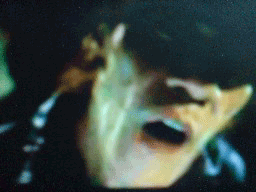08-08-08 : 2008 Beijing Olympic Games
Reading the articles about the opening of the 29th Olympic Game, I felt like I missed one significant event in history. I like these kinds of events especially that the Philippines is involved. I suddenly remember the sportsfest we had in college. The feeling was so intense and exciting. So I couldn't imagine how intense and exciting it would be if you were there during the opening ceremony of the Beijing Olympics. There were 2,008 Fou and 2,008 musicians which symbolized the 2008 Beijing Olympics Games. Fou is the most ancient Chinese percussion instrument made of clay or bronze. Reading this excerpt felt like it was an amazing scene
Footprints of History
29 colossal footprint shapes rise into the sky in a series of fireworks explosions. At a rate of one "footprint" per second, 29 of them march along Beijing's central axis from Tian'anmen Square all the way to the Olympic Green and the National Stadium, symbolizing the path of the Games of the XXIX Olympiad and its arrival.
The footprints are made of fireworks, reflecting upon the invention of gunpowder, one of the four great inventions of ancient China.
Olympic Rings
The "footprints" pass through Tian' anmen Square and head north, with the last "footprint" exploding over the National Stadium, showering the Olympic venue with clusters of falling stars, which gather to form the five Olympic Rings.
Twenty graceful fairies float towards the ground and cluster around the Olympic rings, manifesting beauty and romance. Their costumes glow with light.
source: Beijing 2008



 The Bird's Nest Stadium was designed by Herzog & de Meuron, Swiss architects. These architects were best known for converting London's Bankside power station into Tate Modern. They designed the tyre-shaped Allianz Arena in Munich for the 2006 World Cup as well.
The Bird's Nest Stadium was designed by Herzog & de Meuron, Swiss architects. These architects were best known for converting London's Bankside power station into Tate Modern. They designed the tyre-shaped Allianz Arena in Munich for the 2006 World Cup as well.The Bird's Nest's design is said to last for 100 years and withstand a force eight magnitude earthquake. It covers £250 million of the £20 billion budget for the venues and infrastructure in the run-up to the Games. This huge project has faced controversies. 6,000 homes were demolished and people claimed that there were 10 deaths caused by accidents during the construction of the said Stadium. But the government said that there were only 2.
It is a 91,000-seater stadium with four-star hotel that has 80 rooms under one of its sides. It als has a gourmet restaurant with views of the athletics track, and a twin-level underground shopping centre.
"Its architects also claim it is one of the most environmentally-friendly stadiums in the world, as undersoil geothermal pipes help heat indoor parts of stadium in winter and rainwater is collected and stored in underground cisterns for irrigation and to flush lavatories."
source: telegraph.co.uk
* Photo credits to Xinhua and Adam Pretty/Getty Images
* Photo source : Beijing Olympic's official website



















0 comments:
Post a Comment